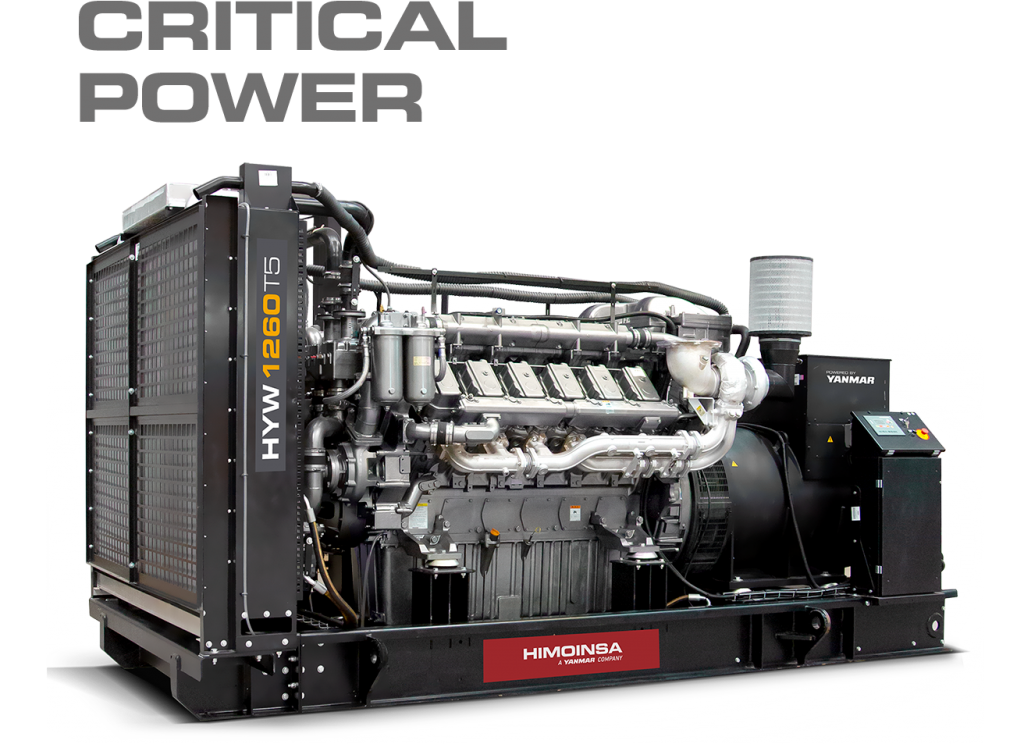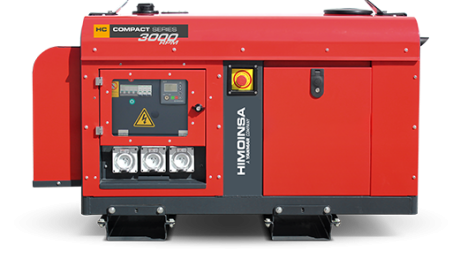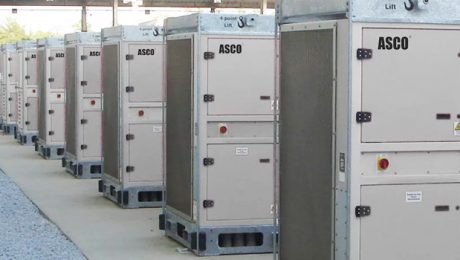10 kVA Generator

Over 300 people per month are looking online for a 10 kVA generator. A 10 kVA generator will power most small equipment for agricultural, construction and domestic uses.
Diesel generators in Australia are becoming as common as scooters in Thailand and rightly so.
Humans are becoming more reliant on power than ever before and for many reasons such as keeping life saving medical equipment operational or a $50,000 tropical fish tank system maintaining optimum water quality & temperature conditions.
With an onslaught of generators being offered in to the Australian market, where should you start your research for the right product?
There are important questions you need to know in order to make a good buying decision.
- Is the engine a ‘joint venture Chinese manufactured engine’ with a global brand stamped on the label?
- Will the product actually be covered by a pain free warranty policy?
- Should it be Air cooled or water cooled?
- Do you need 3000 rpm or 1500 rpm?
- Do you need Standby or prime rated?
These questions and of course the price will form a big part of your decision-making process.
I am a firm believer of “you get what you pay for”.
However, I also understand that there is a market for the ‘cheap & cheerful’ Chinese power products. These products have flooded our market. Some are built with a reasonable quality standard and others are a potential hazard waiting to happen. As a consumer you need to know which ones to steer toward. You need to ensure the generator complies to Australian Safety Standards whilst still keeping the price ticket affordable.
I personally work with our generator hire department to constantly review reliable products for our own diesel generator fleet. In doing so I have gained exposure to the majority of generator brands available on the market today. It’s amazing how constantly I’m being reminded that the Japanese do it best with small diesel engines.
The Japanese manufacturers have the market cornered on Engine performance, cost of ownership, fuel consumption & reliability.
10 kVA diesel generators in both single & three phase configuration are sold in the thousands each year. They are used in every application imaginable;
- Agriculture for watering purposes
- Telecommunication huts
- Constructions site sheds
- Mining camps
- Expensive Aquariums
- And even residential off grid solar back up
One product that is an absolute stand out for me is the HIMOINSA HYW-13 M5 diesel generator. It really is a “one size fits all” product and perfect for both prime & standby power applications.
Utilising the bullet proof Japanese YANMAR 3TNV88 diesel engine the generator also features class leading noise level – 59dB(A) @ 7 metres, 100 litre bunded fuel tank and 2-wire remote start for easy integration to a transfer switch or off grid solar system inverter.
My name is Aaron Robins, I’m the General manager at Generator Power. I have been in the generator game for over 15 years. I have supplied generators to residential and commercial clients for a very wide range of uses. My aim in writing this short article it that I may be able to arm you with the right information in order to help you make a wise decision. There are many people who make poorly informed decisions in my industry. This commonly results in loss of finances, wasted time and bucket loads of stress. I believe in doing a job right the first time and with as little stress possible. As a result I aim to educate potential customers so that people avoid these issues before they happen.
Call us at Generator Power today and let us run through your Generator Needs in order to help you make the right choice up front!
- Published in news
Diesel Generators
Diesel Generators: Two Centuries in Development
What is a Diesel Generator?
Diesel generators, otherwise known as diesel gensets, are a part of modern day life. We are so well acquainted with diesel generators today, it’s easy to take the important function they serve and the role they play in our lives for granted. Diesel generators have become ubiquitous – they can be found throughout our communities, serving in the home, on the farm, in our work places, our schools, hospitals and sometimes as support for community power grids. The practical application of diesel generators in modern life is nearly limitless, yet we rarely stop to consider how they work their magic, or how they came to exist as a staple of the modern age – and that’s something we at Generator Power would like to change.

How a Diesel Generator Works
The short answer is that a diesel generator is the pairing of two marvelous inventions, the diesel internal combustion engine and the electric generator (known today as the alternator). The combustion in the engine provides mechanical energy, also known as kinetic energy, and the alternator converts that energy into electric power. You see this action at work every day in your personal vehicle, though diesel engines and generators function a bit differently from petrol engines.
A petrol engine compresses both air and fuel simultaneously with its pistons, and uses an accompanying device like a spark plug to achieve ignition and combustion. A diesel generator or engine only compresses air. Diesel fuel is injected at the end of the air compression process, which causes the fuel to self ignite. This self ignition removes the need for an auxiliary ignition device (like a spark plug in a petrol engine) and it stabilizes the engine knock in diesel generators and engines, something a petrol engine isn’t capable of.
History of the Diesel Generator
The diesel generator as we know it today owes its existence to an innumerable number of great minds, however, the invention of the diesel generator is most often attributed to the combined life’s work of two men: Michael Faraday and Rudolph Diesel.
Michael Faraday
Michael Faraday was born in 1791 in Surrey, England. His family had few financial means, and the bulk of his education came from unconventional means. At age 14, he became the apprentice to a local bookseller, where he developed his interest in science and electricity in particular. As he grew older, he attended lectures at the Royal Institution and the Royal Society, and through those connections he managed to attain an assistant’s position at the Royal Institution in 1813.
There, he continued his work in chemistry and electricity. His breakthrough moment arrived when he discovered mutual induction, the interaction of magnetic fields on electrical force. That discovery lead to the creation of the ‘Faraday Disk’ in 1831, which operated by attaching two pieces of wire to a sliding contact, which was placed on a copper disk. The disk was then spun through the poles of a magnet, which generated continuous electric current as the disk rotated perpetually.
The ‘Faraday Disk’ is the ancestor to today’s modern alternators, and is the invention for which Michael Faraday remains most remembered.
Rudolph Diesel
In the early 1800’s, the steam engine was high technology, utilized in trains and industry for power generation. Steam engines, however, only converted about 10% of the heat energy they produced into mechanical or kinetic energy. In the early 1890’s, Rudolph Diesel, a refrigeration engineer, set out to create a more efficient motor.
Diesel’s first design was nearly the death of him. As a refrigeration engineer, Diesel had become very familiar with the properties of ammonia, which he tried to use in a steam engine he designed himself. After his ammonia vapor engine exploded, putting him in the hospital for months, he set out in a different direction.
In 1892 he began work on his diesel engine, which originally called for coal dust as a fuel source. After experimentation and the realization that a great deal of the crude oil used to refine kerosene resulted in left over petroleum bi-product, he developed his liquid diesel fuel. His first successful engine resulted in an efficiency rating of 26.2%, an incredible leap beyond what the steam engine was capable of. He continued his work, experimenting with different fuels and designs – one of which used peanut oil and achieved a full 75% efficiency!

Advantages of the Diesel Generator
Diesel generators have been in development for nearly a century, and there are a lot of reasons that engineers have worked to perfect the design instead of branching in a new direction. Though there are many great reasons to choose diesel for your generator needs, we’ve distilled a list of the most important ones below.
- Safety
Since diesel engines operate using self ignition of fuel, it creates less drastic pressure change in the system than a petrol engine. Due to the higher flash point of the fuel, it is less likely to cause explosion or fire.
- Fuel Efficiency & Cost Savings
In a diesel engine, fuel is not compressed with air like it is in a petrol engine; therefore, less fuel is consumed. Diesel generator fuel cost is roughly 40% less than that of petrol for the same kilowatt output.
- Long Life & Maintenance Savings
Diesel generators offer lower operating costs and a longer genset life when properly maintained – and paying for that maintenance costs far less than due a diesel generator’s design as compared to a petrol generator.
- Stability & Reliability
Diesel generators are built to strong to endure heavy loads, and can run on load for a long period of time with a low chance of malfunction or failure.
- Published in news
Himoinsa Generators
Generator Power Offers Wide Range of HIMOINSA Generators

HIMOINSA Generators: History in Brief
HIMOINSA generators are renowned for their high quality and reliability, however their history is rather humble. In 1982, when HIMOINSA opened the doors of its first facility in the small town of San Javier, Spain (whose population numbered less than 12,000 souls), it seems doubtful they could have anticipated that HIMOINSA generators would become the world renowned brand it is today. After 37 years of pioneering energy technology and research, that single HIMOINSA facility has exploded into 9 production centers, 10 subsidiaries, and a network of over 130 distributors which spans every continent and operates in 120 countries.
Part of HIMOINSA’s success lies in no small part to its development of smart business relationships. In 2006, Himoinsa partnered with Yanmar, a Japanese diesel engine manufacturer based in Osaka. The partnership between the companies blossomed into a mutually beneficial alliance, expanding both company’s reach into the global energy industry. In 2015, Yanmar purchased a 70% stake in HIMOINSA, further cementing their relationship. Even though Yanmar acts as the parent company of Himoinsa, it didn’t seek to modify HIMOINSA ‘s structure or staff during the acquisition. Instead, Yanmar left HIMOINSA to do what it does best: Manufacture world-class generators.

HIMOINSA Quality Process
HIMOINSA generators are designed and built with a customer based philosophy, utilizing a unique manufacturing process to ensure they produce best quality generator possible. In short, each HIMOINSA generator is ‘100% HIMOINSA ‘. HIMOINSA prides itself on the fact that it is a ‘vertical producer’, which means each component, from the generator body to the controller is designed, manufactured and tested at HIMOINSA ‘s world spanning production facilities.
HIMOINSA ‘s greatest strength lies in its ability to control every aspect of the production process, therefore allowing their team to ensure each component integrates perfectly into the generator design as a whole. Every HIMOINSA generator is ISO 9001 compliant, built to BVQi certification standards, and is created with, as HIMOINSA puts it, ‘a core focus on Quality, Health and Safety and Robust Reliability.’
Since HIMOINSA controls the entirety of its own production processes, they also have the flexibility to build custom projects to client specifications, should the need arise for something outside the already impressive range of existing HIMOINSA generators the company offers.

HIMOINSA Generators for Every Occasion
HIMOINSA offers a large selection of generators, and here at Generator Power, we’ve got you covered. We have curated our selection of HIMOINSA generators to offer you the best quality and value for every conceivable application. Here are some of our favorites that demonstrate the versatility of HIMOINSA ‘s product ranges.
- INDUSTRIAL RANGE: HSW-500 T5 Canopy
HIMOINSA ‘s industrial range (4kVA-863kVA) spans a variety of motive types and arrangements, but this unit is powered by aneconomical & reliable Scania DC13 72A (02-14) diesel engine coupled to a Stamford alternator, running at 500kVA when at prime or 550kVA when in standby. This incredibly quiet generator (73dB at 7 meters) is a perfect fit for any industrial use, such as emergency standby for a freight distribution center.
- HEAVY RANGE: HTW-780 T5 Himoinsa Containerised 20FT
The heavy range of HIMOINSA ‘s diesel generators starts at 670kVA and extends to a powerful 3495kVA. Though the heavy range encompasses many different types of configurations, some like this one are containerised. At 775kVA primeand 8356kVA in standby, this HIMOINSA generator works best for emergency standby, construction, mining, telecom, and other heavy industrial applications.
- MEDIUM RANGE: HTW-1745 T5
This range was designed by HIMOINSA for situations where high performance is required, but lower voltage is preferable. These HIMOINSA generators come with medium range voltage transformers or outputs. This particular open unit pushes 1736kVA when running prime, and 1900kVA in standby, and finds its niche when used for industrial and telecom operations.
- RENTAL RANGE: HYW-13 M5 Canopy
Generator Power is proud to offer the HYW-13 M5 Canopy, part of HIMOINSA ‘s industrial range, for rental or hire uses. This smaller HIMOINSA generator is reliable in all conditions, and it shines when integrated into your solar, battery or inverter systems. It could easily fit into use for agricultural, mining, and construction applications. This particular unit runs extremely quiet at 59 decibels at 7 meters, with a 40 hour runtime at 75% load.

HIMOINSA Generators: Quality Name, Quality Product
The bottom line with HIMOINSA generators is that no matter your need, you’re getting a tough, reliable generator designed with the industry’s cutting edge in technology and engineering knowledge. With 35+ years spent perfecting their process and technique, driven by the brightest minds in the industry, HIMOINSA and Generator Power has you covered.
- Published in news
HIMOINSA release new 50kVA & 60kVA YANMAR Generator Models
- Published in news
An Introduction to Transfer Switches: Single Phase and Three Phase
- Published in news
Generator Sound Levels Explained: Noise Reduction
- Published in news
Yanmar-Himoinsa Generators: Powerful, Quiet and Durable
- Published in news






